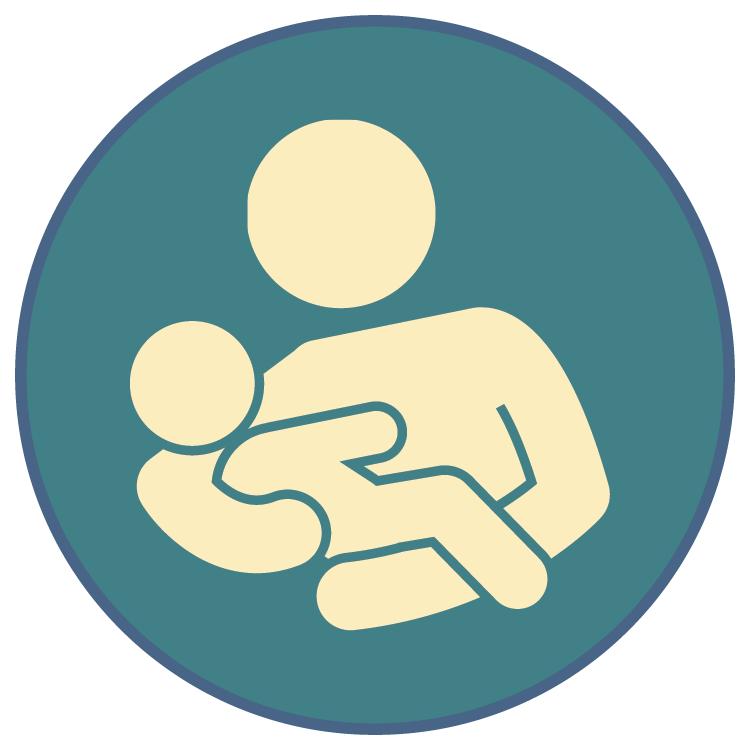Module Sources and References
Aitken, S., Buultjens, M., Clark, C., Eyre, J. T., & Pease, L. (2000). Teaching children who are deafblind. David Fulton Publishers.
American Speech-Language-Hearing Association. (n.d.). IDEA Part C: Transitions (Including Part C to Part B/Exiting Part C). https://www.asha.org/advocacy/idea/idea-part-c--issue-brief-transitions/
Anthony, T. L. (2016). Early identification of infants and toddlers with deafblindness. American Annals of the Deaf, 161(4), 412–423. http://www.jstor.org/stable/26235292
Anthony, T. L., Bleier, H., Fazzi, D. L., Kish, D., & Pogrund, R. L. (2002). Mobility focus: Developing early skills for orientation and mobility. In R. L. Pogrund & D. L. Fazzi (Eds.), Early focus: Working with children who are blind or visually impaired and their families (pp.326-404). AFB Press.
Belote, M. (n.d.). Successful transition between programs. California Deaf-Blind Services. https://5871e0203a.clvaw-cdnwnd.com/5f010285cae218a5d7d72c47c1fa8f71/200000124-b4071b5009/36TransitionsPrograms.pdf
Brown, D. (2006, July–Dec). The forgotten sense: Proprioception. Dbl Review, 20–24. https://aerbvi.org/wp-content/uploads/2016/01/aFeb12.pdf
Buchanan, L., Hayes, J., Montgomery, C., Peterson, L., Stagg, S. (2015, September). Concept development and responsive environments [Online module]. Open Hands, Open Access: Deaf-Blind Intervener Learning Modules. National Center on Deaf-Blindness, The Research Institute, Western Oregon University. https://www.nationaldb.org/products/modules/ohoa/concept-development/
Chen, D. (2014). Essential elements in early intervention: Visual impairment and multiple disabilities. AFB Press.
Clarke, K. (2004). Hold Everything! Twenty “stay-put” play spaces for infants and preschoolers with sensory impairments and other special needs. Ohio Center for Deafblind Education. https://www.ohiodeafblind.com/wp-content/uploads/2022/04/Hold-Everything-WEB-ready-060122.pdf
Coleman, E. (2013, December 10). Conquering the fairy godmother. Family Connect and American Printing House for the Blind. https://familyconnect.org/blog/raising-a-child-who-is-blind-and/conquering-the-fairy-godmother/
The Communication Matrix Team. (2015, February 15). The 7 levels of the communication matrix explained [video]. Communication Matrix, Community. https://communicationmatrix.org/Community/Posts/Content/5304
Crook, C., Miles, B., & Riggio, M. (1999). Developing early communication and language. In B. Miles & M. Riggio (Eds.), Remarkable conversations: A guide to developing meaningful communication with children and young adults who are deafblind (pp. 146-179). Perkins School for the Blind.
Downing, J. E., & Chen, D. (2014). Critical transitions: Educating young children in general education preschools. In D. Chen (Ed.), Essential elements in early intervention: Visual impairment and multiple disabilities (pp. 463–519). AFB Press.
Gense, D. J., & Gense, M. (rev. 2004, August). The importance of orientation and mobility skills for students who are deaf-blind. The National Information Clearinghouse on Children Who Are Deaf-Blind, Helen Keller National Center, Perkins School for the Blind, Teaching Research.
https://www.nationaldb.org/info-center/orientation-and-mobility-factsheet/
Hagood, L., & Moss. K. (n.d.). Conversations without language: Building quality interactions with children who are deaf-blind. http://www.deafblind.com/lhagood.html
Illinois Early Learning Project (2012). Domain 4: Symbolic thought. https://illinoisearlylearning.org/ielg/symbolic/
Jones, C., & Baesler, K. (n.d.). Understanding early childhood transition: A guide for families and professionals. North Dakota Early Childhood Transition. https://www.nd.gov/dpi/sites/www/files/documents/SpeEd/Early Childhood/ND DHS DPI Transition Guide-Final-4.18.17.pdf
Maier, J., & Medina, M. (2016). Moving forward with the transition to preschool through collaborative planning. https://5871e0203a.clvaw-cdnwnd.com/5f010285cae218a5d7d72c47c1fa8f71/200002596-e03d4e2302/reSourcesFall201603Transition.pdf
Miles, B., & McLetchie, B. (2008). Developing concepts with children who are deaf-blind. The National Consortium on Deaf-Blindness. https://www.nationaldb.org/info-center/developing-concepts-factsheet/
National Center on Deaf-Blindness. (n.d.). Transitioning from early intervention to preschool. https://www.nationaldb.org/info-center/educational-practices/early-intervention-to-preschool/
National Center on Deaf-Blindness. (2021). Preschool transition planning checklist. https://www.nationaldb.org/media/doc/Preschool_Transition_Planning_Checklist.pdf
National Center on Deaf-Blindness. (2021). Transition to preschool: Helpful tips for families. https://www.nationaldb.org/media/doc/Transition_to_Preschool_Helpful_Tips_for_Families.pdf
National Consortium on Deaf-Blindness. (2009, September). Practice perspectives: Teaching prelinguistic communication. https://www.nationaldb.org/info-center/prelinguistic-communication-practice-perspective/
Nelson, C., Bruce, S. M., & Barnhill, B. A. (2022). Future directions in the field of deafblindness. In C. Guardino, J. E. Cannon, & P. V. Paul (Eds.), Deaf and hard of hearing learners with disabilities: Foundations, strategies, and resources (pp 162–192). Routledge.
Parent Companion First Five Years. (n.d.). Create a portfolio to help others understand your child.
http://www.parentcompanion.org/article/create-a-portfolio-to-help-others-understand-your-child
Pease, L. (2000). Creating a communicating environment. In S. Aitken, M. Buultjens, C. Clark, J.T. Eyre, & L. Pease (Eds.), Teaching children who are deafblind: Contact, communication and learning (pp.35–82). David Fulton Publishers.
Perkins School for the Blind. (n.d.). Transitioning to pre-school [Video]. https://www.perkins.org/resource/transitioning-pre-school/
Perkins School for the Blind. (2011). Developing an effective IEP for children with deaf-blindness: A parent mini-guide. https://www.perkins.org/wp-content/uploads/elearning-media/develop_effective_iep_mini_guide.pdf
Rowland, C. (Ed). (2009). Assessing communication and learning in young children who are deafblind or who have multiple disabilities. Design to Learn Projects, Oregon Health & Science University. https://www.designtolearn.com/uploaded/pdf/DeafBlindAssessmentGuide.pdf
Rowland, C. (2011). Handbook: Online communication matrix. Communication matrix for parents and professionals. Oregon Health & Science University. https://www.communicationmatrix.org/uploads/pdfs/handbook.pdf
Rowland, C. & Schweigert, P. (2004). First things first: Early communication for the pre-symbolic child with severe disabilities. Oregon Health & Science University.
Stremel, K. (rev. 2008, January). Communication interactions: It takes two. The National Information Clearinghouse on Children Who Are Deaf-Blind, Helen Keller National Center, Perkins School for the Blind, Teaching Research.
https://www.nationaldb.org/info-center/communication-interactions-factsheet
Teykaerts, J. (2015). Transition from early intervention services into Part B preschool special education services. Early Child Technical Assistance Center. https://earlystartneighborhood.org/transition-from-early-intervention-services-into-part-b-preschool-special-education-services-2015/
Vallotton, C. D., & Ayoub, C. C. (2010). Symbols build communication and thought: The role of gestures and words in the development of engagement skills and social-emotional concepts during toddlerhood. Social Development, 19(3), 601–626. https://doi.org/10.1111/j.1467-9507.2009.00549.x
Writer, J. (1987). A movement-based approach to the education of students who are sensory impaired/multihandicapped. In L. Goetz, D. Guess, & K. Stremel-Campbell (Eds.), Innovative program design for individuals with dual sensory impairments (pp. 191–223). Paul H. Brookes.
